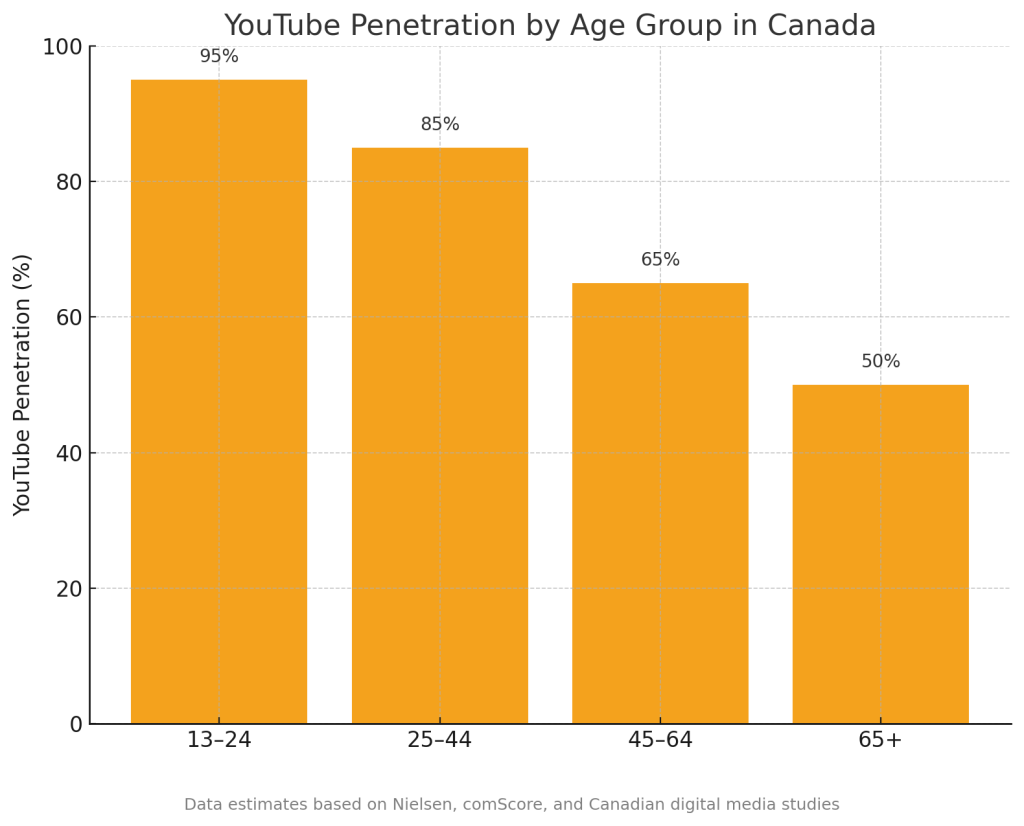Over the past decade, the way Canadians watch television has undergone a major transformation. This change isn’t just among younger audiences. One of the most striking shifts has come from viewers aged 65 and over, who have historically been the most loyal to traditional TV. Today, even they are moving toward streaming and the pace of that shift has surprised many in the media industry.
In 2019, streaming made up just under 20% of all TV viewing time in Canada. Linear TV – cable and old-timey over-the-air broadcast – still dominated. But by 2024, streaming had become the most-watched format, representing over 40% of total viewing time. The trend continued into 2025, with YouTube alone accounting for more than 11% of total TV usage. This surge isn’t limited to younger viewers – YouTube’s rise cuts across all age segments. It’s now the single most-watched streaming platform in Canada, making it far bigger than any single linear TV network.
What’s most remarkable is the growth among older Canadians. In recent data, half of Canadians aged 65 and up now use YouTube, up from much lower penetration just a few years ago.

Netflix, and Amazon Prime Video also maintained strong and growing shares, but YouTube’s free, accessible format gives it a unique edge. For Canadians of all ages- from teens to retirees – it has become a primary destination for video content.
As in more bad news for Bell and the incumbent telcos, the number of cable TV households dropped below 50% for the first time in 2022 and continues to fall as Canadians. Cutting the cord and shifting is no longer the preserve of the young – olds are doing it too.
The reasons for the shift are simple. Streaming is often cheaper than cable. The content is on-demand, easier to navigate, and can be paused, resumed, or skipped at will. Smart TVs, tablets, and streaming sticks have become more user-friendly. And most importantly, the content has followed the viewers. Popular series, live sports, and even local news now stream across platforms.
The result is a complete rewrite of what it means to watch TV in Canada. Linear TV hasn’t disappeared yet – but it’s no longer the centre of the household. Instead, it plays a supporting role to streaming platforms that offer more control and more relevance. Sports and news keep it on life support.
For marketers, the implications are massive. Connected TV (CTV) ad spending in Canada is projected to continue its strong growth, especially as more Canadians adopt ad-supported streaming services. With older demographics now firmly in the streaming ecosystem, advertisers have to rethink assumptions about who watches what and where. It’s no longer accurate to associate streaming only with younger, tech-savvy audiences.
This shift will continue. While linear TV may still have a place for live events and breaking news, it is quickly becoming a relic of the past. Seniors have shown that they’re not only willing to change – they’re already there, scrolling Youtube alongside their grandchildren.

